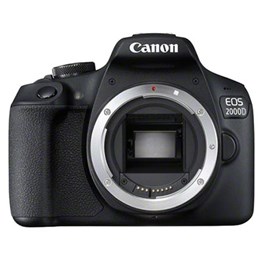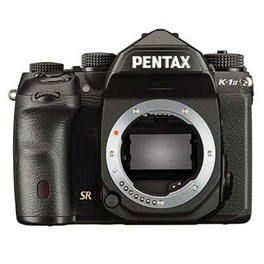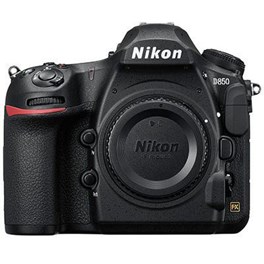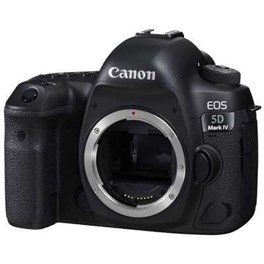
The best DSLR cameras are classics for a reason. Durable, long-lasting and capable of capturing spectacular images, a good DSLR can be a photographic companion for life. While mirrorless may be where manufacturers are putting most of their resources, for many photographers, you can’t beat a good old DSLR. There’s no doubt about it – the best DSLRs are still some of the best cameras you can buy.
What makes a DSLR? Well, the acronym stands for “Digital Single-Lens Reflex”. These cameras are built on the same basic design as the film SLRs of old – they have a mirror system incorporated that allows them to field an optical viewfinder. They also tend to be built tough, with professional models having tank-like bodies that can stand up to some serious punishment.
The question is, therefore, which is the best DSLR camera to buy? Nikon? Canon? That's a debate for the ages. But nevertheless, we’ve put together this guide to help you answer that question, with our picks of the finest DSLR cameras available right now. We’ve included options for all budgets, running from the cheapest DSLRs available to high-end cameras designed for professionals.
Quick Navigation
Our top picks
Canon EOS 2000D Digital SLR Camera Body
The Canon EOS 2000D Digital SLR Camera Body is the perfect beginner camera to get you started with DSLR photography. With its easy operability, intuitive design, and in-camera guide, the EOS 2000D will bring your images to life. Create effortlessly gorgeous background blur and capture exciting moments with cinematic Full HD video. Share these in an instant thanks to the Wi-Fi and NFC connectivity. The 24.1-megapixel imaging sensor, with up to 19x more surface area than most smartphones, is sure to make your photographs stand out.
£479.00 View
Pros:
- Highly affordable price tag
- Lightweight and easy to use
- 24.1MP gives plenty of room for printing
Cons:
- Only 3fps burst shooting
- Fairly basic autofocus system
The EOS 2000D is one of the most affordable DSLRs around currently. Given this fact, you might expect it to be somewhat bereft of features. Not so! This is a well-equipped camera that provides enough of a jump in quality from a smartphone to be worth the investment. As well as access to the impressive stable of EF lenses, you also get a 24MP APS-C sensor that’ll capture images far more detailed than any phone.
Creative Auto mode, Creative Filters and Scene Intelligent Auto modes help users make the most of the EOS 2000D’s capabilities without getting bogged down in settings. There’s also Full HD video, which comes equipped with Video Snapshot mode to make easy, shareable highlights from your day. It’s easy to use the Canon Camera Connect app for Android and iOS to send images straight to your phone or other smart device, and have your creations ready to share instantly.
The version we’ve picked out also comes bundled with an 18-55mm IS II Lens, a useful standard zoom that produces reliably sharp and vibrant images in all different shooting situations. Like the 2000D itself, the lens is perfect for the novice photographer, but provides tremendous room to grow.
Nikon D780 Digital SLR Camera Body
The Nikon D780 comes as the eagerly anticipated successor to the well-regarded Nikon D750. It features a powerful 24.5 Megapixel Full Frame CMOS Sensor and EXPEED 6 image processor. This camera body can offer something to every level of photography and videographer alike. It features a 51-point Phase-Detection AF via the Viewfinder and 273-point Hybrid-AF system in Live View. The camera can shoot up to 7 fps with AF/AE and up to 12 fps in Silent Live View Photography mode. When it comes to video, the camera is capable of capturing 4K/UHD footage at 30p/25p/24p with zero crop factor. It also features dual SD card slots and an incredibly useful and high-quality tilting touchscreen.
£1,299.00 View
Pros:
- Smart hybrid autofocus
- Uncropped 4K UHD video
- Dual card slots
Cons:
- No built-in stabilisation
- Somewhat big and hefty
Nikon’s exemplary hybrid DSLR takes its cues from mirrorless cameras to deliver a superb shooting experience for both photography and video. Given that more and more content creators are dipping their toes into stills and video these days, cameras need to keep up. The Nikon D780 is a fantastic example of how the humble DSLR can be retooled to do just that – as well as producing sublime stills, it shoots 4K UHD footage at up to 30p with zero crop factor. In Live View, using the LCD screen, the D780 really comes into its own, with a 273-point Hybrid-AF system that is simply class-leading among DSLRs.
With dual SD card slots, a water-resistant body and an ISO range expandable to 204,800, the Nikon D780 is without a doubt a sublime professional tool and one of the best DSLRs you can buy right now. Brilliant for video and superb for stills, this is a camera that will suit any serious user.
Pentax K-1 Mark II Digital SLR Camera Body
The Pentax K-1 Mark II is a powerful DSLR camera body that features a 36.4-megapixel full-frame CMOS sensor, Prime IV image-processing engine and an impressive Dynamic Pixel Shift Resolution System. The body is weather-sealed and comes without an anti-aliasing filter that in turn priorities image quality. It also features an improved ISO range of up to 819,200 that is improves on this flagship camera's low-light capability and of course, this is compatible with the excellent range of Pentax K mount lenses.
£1,449.00 View
Pros:
- Comprehensive weather sealing
- Effective in-body stabilisation
- Generous 36MP resolution
Cons:
- Fewer lens choices than Canon/Nikon
The successor to Ricoh’s first ever full-frame Pentax DSLR, the Pentax K-1 Mark II is a beauty to behold and a joy to use. Robust and weather-sealed, the K-1 Mark II brings a new pixel-shift mode that allows you to create a super-high-resolution image using the built-in image stabilisation system to combine four files into one. It keeps plenty of features from the well-received K-1 as well, including the 36MP full-frame CMOS sensor, the 33-point AF system, the unique cross-tilt LCD screen, the built-in astrotracer for night photography and more.
While Pentaxians don’t have as many lenses to choose from as users of Canon EF or Nikon F cameras, there are still a fair few options for Pentax K-mount – including legacy lenses from the days of analogue SLRs. Bear in mind that not all of them will have the same level of comprehensive weatherproofing as the K-1 Mark II. In newer lenses, look for an “AW” acronym in the lens name – this stands for “All Weather”.
Nikon D850 Digital SLR Camera Body
Save £250, was £3249
Introducing, the Nikon D850, a photographic workhorse that has been equipped with a huge 45.7 megapixel sensor that will not disappoint. The 45.7 megapixel back-illuminated, full-frame CMOS sensor and extended battery life will keep up with all any photographic adventure you can throw its way, from the studio photo shoots to the remotest places on Earth. The tough and rugged magnesium-alloy build and all-weather sealing allow you to take its power wherever you want to go. The stunning image quality and impressive performance of this camera makes it the ultimate choice and will continue to be a game changer for years to come.
£1,699.00 View
Pros:
- Beast of a camera that can shoot basically anything
- Big battery life
- 4K video
Cons:
- Big and heavy
- Professional price
One of the best-loved workhorse cameras around, rated by enthusiasts and professionals alike – there are several high-resolution DSLRs on the market, but none of those quite beat the Nikon D850 when it comes to versatility. Though it packs a 45MP sensor, this device is far more than just a megapixel monster. The D850 does a fantastic job of sticking with moving subjects, thanks to its brilliant Multi-CAM 20K AF sensor module and 153-point AF system, which operates down to -4EV, and includes 99 cross-type and 15 sensors that support f/8.
Pair this with a 9fps burst mode — and not forgetting that superior resolution — and the D850 can photograph just about anything. A touch-screen display, Wi-Fi, Bluetooth and a massive 1,840-shot battery life all only add to this versatile camera’s appeal.
The Nikon D850 also shoots 4K UHD 30p video using the full width of its sensor, so hybrid content creators are well catered for. It's possible to capture stunning 4K time-lapses in camera, or even amazing high-res 8K time-lapse sequences. The D850 is simply a camera that does everything, and one of the best DSLRs ever made.
Canon EOS 5D Mark IV Digital SLR Camera Body
The Canon EOS 5D Mark IV Digital SLR Camera Body offers a 30-megapixel CMOS sensor with a maximum ISO sensitivity of 32,000, and an expanded 61-point AF-system. Capture magnificent detail even in the toughest conditions as the camera body features a weather-resistant design. Users can enjoy beautiful 4K video recording at 30 fps; whereas, HD video can be captured at 120 fps when trying to achieve a slow-motion effect. In addition to this, WiFi and NFC connectivity are also available allowing for easy file transfer and more.
£1,789.00 View
Pros:
- Superb full-frame image quality
- Solid, weather-sealed body
- Intelligent viewfinder displays shooting information
Cons:
- 4K video is cropped
- Rear screen is fixed
Bringing pristine 4K 30p video to the party, the EOS 5D Mark IV is one of the finest video DSLRs around right now. The fourth camera in the series that kickstarted the DSLR video revolution, the EOS 5D Mark IV blends a high resolution sensor, 4K video, great connectivity options and the fantastic image quality we’ve come to expect from the EOS 5D line.
This is a camera that can handle the unique challenges of every location, thanks to its superior build quality and solid weather-sealing. It records exactly where every shot is taken via built-in GPS, and with Wi-Fi connectivity, images can be shared quickly and easily. Add to that a 61-point phase-detection AF system with 41 cross-type points, for fast and accurate focusing, and a top burst rate of 7fps, and you won’t miss a moment.
The 5D Mark IV is a great full-frame all-rounder, sporting an intelligent viewfinder with 100% coverage that can display shooting information. The touchscreen interface works well too, and there’s a nice 21-RAW buffer that’s useful for fast shooting.

FAQs
What is a DSLR camera?
A DSLR (Digital Single-Lens Reflex) camera is a type of digital camera that uses a mirror mechanism to reflect light from the lens up into an optical viewfinder. This allows you to see exactly what will be captured through the lens.
How does a DSLR camera work?
The mirror mechanism inside reflects light from the lens up into an optical viewfinder. When the shutter button is pressed, the mirror flips up, allowing light to hit the camera's image sensor, capturing the image.
What are the advantages of using a DSLR camera?
DSLR cameras offer several advantages over other types of cameras such as compact cameras, including superior image quality, interchangeable lenses, manual controls, and an optical viewfinder.
What should I consider when buying a DSLR camera?
Before buying a DSLR camera you’ll need to think about serval factors such as sensor size, megapixels, lens compatibility, features, and budget. But the best place to start is to consider what you want to take photos of. Once you know this, it’ll make your decision much easier.
Are DSLR or mirrorless cameras better?
It all depends on individual preferences and shooting needs. DSLR cameras offer optical viewfinders and a wide range of compatible lenses, while mirrorless cameras are typically lighter, more compact, and offer advanced autofocus systems and electronic viewfinders. They both have strengths and weaknesses. It’s best to try out both to get a feel for what you like.
How do we decide?
Our in-house photography experts, store staff and partners all work collaboratively to pour over our guides and tips articles. We also consider emerging trends and customer feedback to make sure our guides are always up-to-date and reflective of what people are truly looking for. By curating only the best products, our guides provide trustworthy recommendations, making it easier for customers to make informed choices with confidence.
If you would like more advice on any purchase our contact centre staff are here to help. Alternatively, you can reach us via email or social media. And don't forget. If you were to purchase anything based on our recommendations you'll be covered by our full returns policy
Sign up for our newsletter today!
- Subscribe for exclusive discounts and special offers
- Receive our monthly content roundups
- Get the latest news and know-how from our experts









